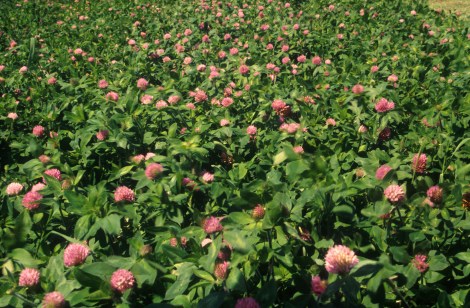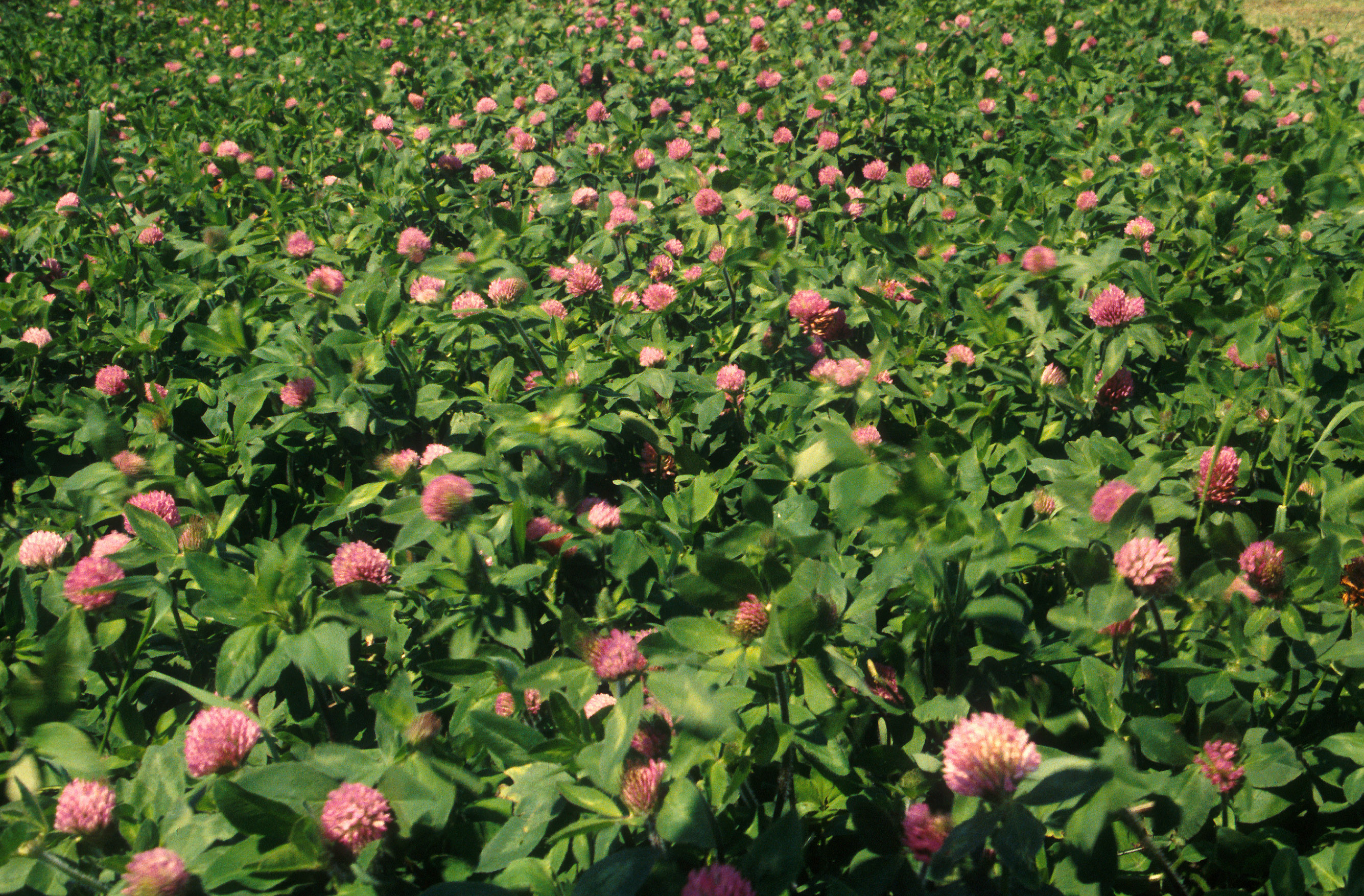
R. R. Smith / USDACover crops like red clover could be the factor allowing organic farms to sequester carbon dioxide.
We’ve known for a while now that organic agriculture is good for the climate: It does a better job at grabbing carbon from the air and turning it into soil than industrial agriculture, which often does just the opposite.
Last year, researchers reexamined all 74 studies that had looked at organic farming and carbon capture. After crunching the numbers from the results of these studies they concluded that, lo and behold, organic farms are carbon sponges.
This makes some intuitive sense: It’s generally the organic farmers who are most concerned with building up the soil — they can’t rely on synthetic supplements if the soil chemistry runs low, after all. And when farmers talk about building up the soil what they mean — on a fundamental level — is creating more dirt. The new dirt comes from plants, which, in turn, are made of carbon (in part). More topsoil means less carbon dioxide in the atmosphere.
But it’s still a mystery as to exactly how this works. Why don’t microbes chomp up every new organic molecule introduced into the soil and fart it back into the air? And why would a different form of agriculture change microbial behavior? Figure that out, and there would be hard evidence to spread the practice.
The microbial world is a wondrous, unmapped mystery because it’s so hard for us humans to see what goes on there. But many more tools are now available to let us peek into that kingdom. Methods for cheaply sequencing microbial DNA are like a whole array of Hubble telescopes, only in reverse, looking right at the earth rather than out into space.
Recently, a team of scientists decided to compare the microbes in organic and conventional plots (plus one “low intensity” field that was somewhere between organic and conventional) at the W.K. Kellogg Biological Station in Michigan. They noticed that there was a much lower diversity of microbes in the conventionally farmed plot [PDF]. Perhaps the more complex community is better at exchanging the carbon among themselves, rather than releasing it to the atmosphere.
Phil Robertson, one of the scientists on this project, told Climate Wire that he has another hypothesis. He thinks the plants may be hiding the carbon from the microbes. The scientists planted a crop of red clover on the organic and low-intensity fields for the winter. Clover produces a class of chemicals called phenolics; phenolics inhibit microbial growth, he said, and keep them from digesting the carbon.
Organic farming isn’t a silver bullet for reducing agricultural emissions. Robertson found organic farming emitted just as much nitrous oxide — a much more potent greenhouse gas than carbon — as conventional farming. (Still, other studies [PDF] suggest that the right techniques could do the job.) That’s yet another reason to determine precisely what farming practices– beyond just “go organic!” — make the difference between absorbing and emitting greenhouse gases.



